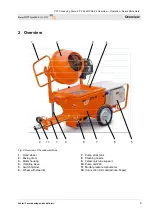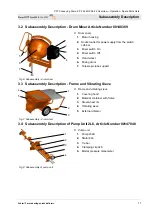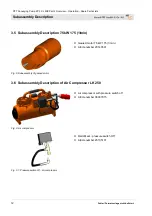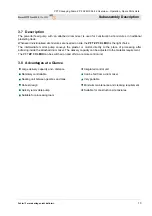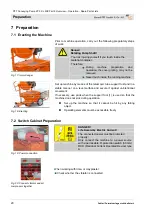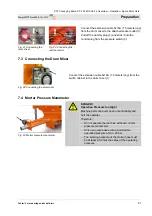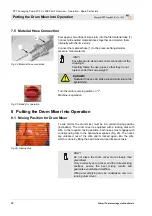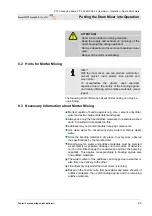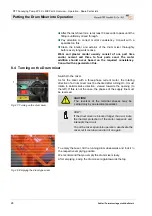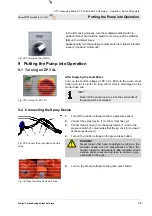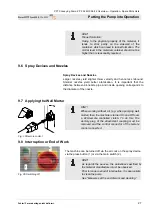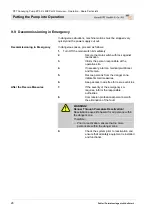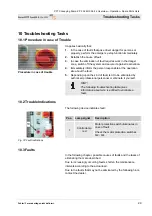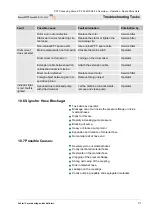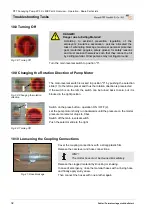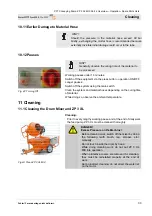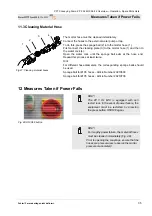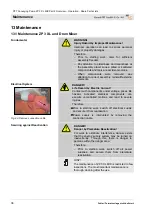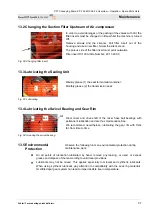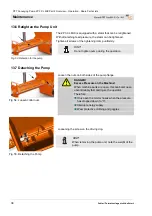
PFT Conveying Pump ZP 3 XL MIX Part 2 Overview – Operation - Spare Parts Lists
Putting the Drum Mixer into Operation
Fehler! Formatvorlage nicht definiert.
23
ATTENTION!
Never touch inside the running machine.
Keep the supply and exhaust air openings of the
motor housing free during operation!
Remove deposits and never cover openings in any
case.
Danger of the motor overheating
!
8.2 Hints for Mortar Mixing
HINT!
With the drum mixer, one can produce wall mortar,
cement plaster, loam plaster, lime plaster and
much more.
To manufacture the plaster, seek specialist
expertise due to the variety of the bonding agents
and locally differing extra additive materials (sand
types).
The following short information about mortar mixing can only be
non-binding.
8.3 Necessary Information about Mortar Mixing
Mortar consists of bonding agents (e.g. lime, cement, anhydrite),
water and extra charge materials (sand types).
Always use only the best additive materials, for example washed
sand. Consult with a specialist on this.
Additives may not contain earthly decaying components.
Use clean water. Do not add any slurry water nor factory waste
water
Store the bonding material in dry place. In every case, observe
the specifications by the manufacturer.
Bonding agents, water and additive materials must be metered
as accurately as possible. Already one to two litres of water too
much or too little change the consistence and thus the pumping
capability. This applies correspondingly to bonding agents also
and additive materials.
The water content of the additives can change due to weather or
also from one delivery to the other.
Fill and empty only whilst the drum mixer is running.
Based on the mixture ratio, first pour water and some shovels of
additive materials, then add bonding agents and the remaining
additive materials.

